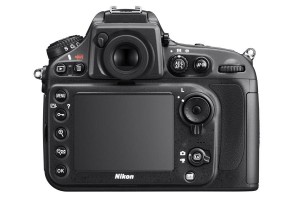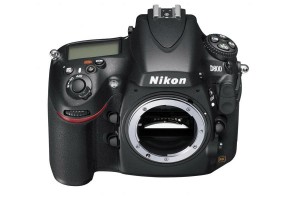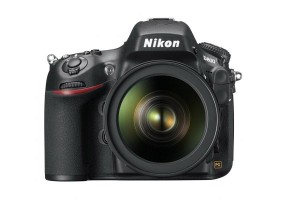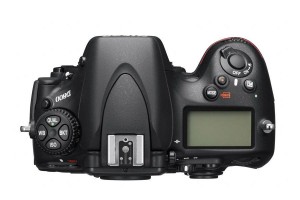If the Nikon D800 is able to deliver image quality ever achieved in the SLR, this has its downside: low burst, autofocus a bit slower than the D700, very large files, etc..
With 36 megapixels, the Nikon D800 redefines the term “SLR image quality.” But this coin has a flip side: huge files and a low rate in burst mode.
Contrary to what its name may suggest, the Nikon D800 is the successor to the D700. The latter was for many years a friend of reporters – whether in the press, weddings, etc. – With its excellent sensor 12 megapixel, high robustness and great burst. With a “huge” sensor 36 million photosites, and therefore very large files, and cadence downgraded with only 4 frames per second, the Nikon D800 is radically changing target.
Reality
Manufactured by Sony, the Nikon D800 sensor is defined as the category of sensor full format. A stunning definition – more than twice the D4 professional camera! – Allowing the D800 to come tease medium format cameras used by professionals for large reproductions (advertising, etc.).
The miracle of high sensitivity

More pixel density increases, digital noise problem because the pixels compete for a finite amount of light. And this is one of the successes of Nikon despite the 7360 x 4912 pixel pictures, the increasing ISO is almost as good as the D700, though three times less defined! Coupled with an excellent dynamic range and good colors and you get a case of exception. Nikon D800 is equipped with optical Nikkor 50 mm F1.4 details suprennent the retina. A portrait, we come to enter the pores of the skin. Lovers silver jump to the ceiling so you move away from traditional velvety films of yesteryear so much smoother and less dive. Some love the rendering, others not, but the fact remains that the technical quality is there and the potential crop is really huge.
The downside

This superb image quality and high definition that will delight maniacs technical quality, but are the cause of many problems in Nikon D800.
Primo: The file size of the sensor 36 Mpix is so large (up to 75 MB per RAW image 14 bits) as memory cards and hard drives, saturate quickly.
Optics of midrange quickly shows their limits and only the best of them are able to reveal the full potential of the sensor. To take full advantage of the D800, it is necessary to equip the latest versions of the most expensive zooms – 24-70 mm F2.8, etc. – Or prefer primes.
And third: low burst device disqualifies for situations that require debit images in spades.
D800E: more details
A special version of the Nikon D800 is available for sale: the Nikon D800E. The only difference with the original case is that its sensor is not fitted with a low-pass filter (anti-aliasing). In fact, this case delivers images slightly stung since no smoothing applied to the pixels. The downside is that the case does not correct, a defect that occurs when photographing subjects such as blinds, brick walls and even textiles, where straight lines appear distorted and regular superimposed on each other.
Screen images of Nikon D800E have a little more punch than the standard Nikon D800. And as more effects are corrected in post-production, D800E is an attractive option if you’re ready to add 300 euros to the bill and if it does not do too much video, a mode where the more is much more complicated correct. If you’re in the studio, the Nikon D800 is a very attractive option since the device allows you to approach the definition of much more expensive devices, the medium format.
Autofocus: Canon EOS 5D Mark advantage III
Nothing is carved in marble and the Nikon D800 proves that unlike the D700 was in its time better than the Canon EOS 5D Mark II in autofocus, the D800 is this time a good notch below the 5D Mark III. This is, indeed, more nervous side autofocus and especially more comfortable in the shadows where it buries the Nikon D800.
Video mode: the quantum leap!
The Nikon D700 had no video mode and this is one reason why Canon has won the war with the 5D Mark II. Not only is the Nikon D800 offers a video mode, but also Nikon put the dishes in the major with a headphone jack, a microphone jack, manual control while shooting and HDMI output uncompressed. This last option will appeal to enthusiasts and pros that record videos on an external box and not on the memory card (note for those: the HDMI outputs a signal in 1080p 4:2:2, but only when n ‘there is no memory card in the camera, otherwise the signal switches to 720p). Frames are very fluid and are a bit more detailed than the 5D Mark III. However, it keeps the advantage with better management of low lights, a little more ergonomic designed – you can control all the functions of video with one hand – and a color rendering at once more just and flattering. But one thing is for sure, ” Nikonistes” finally have their full-housing” accessible “to make high quality video!”
The verdict
With its sensor of another world, the Nikon D800 does not follow the D700 and it is not a direct competitor of the 5D Mark III. Rather, it means mini-office format, a case that will undoubtedly be cherished by many portrait photographers, studio, architecture, etc. For its outstanding performance of picture if we add to this an excellent video mode and build quality still very good, you get a device that has the weapons to become a must. However, fans will surely report suffer the limitations of this supercapture: massive files, power required for image processing, low burst drives quickly saturated, high-end optical requirements. These concessions are so it makes less versatile than the D800 5D Mark III, and this is our only real complaint.
This was all regarding the Nikon D800 36MP sensor camera.

